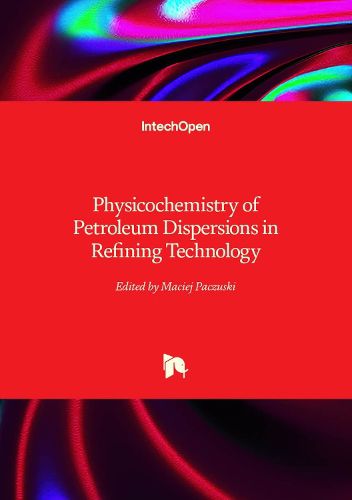Readings Newsletter
Become a Readings Member to make your shopping experience even easier.
Sign in or sign up for free!
You’re not far away from qualifying for FREE standard shipping within Australia
You’ve qualified for FREE standard shipping within Australia
The cart is loading…






This title is printed to order. This book may have been self-published. If so, we cannot guarantee the quality of the content. In the main most books will have gone through the editing process however some may not. We therefore suggest that you be aware of this before ordering this book. If in doubt check either the author or publisher’s details as we are unable to accept any returns unless they are faulty. Please contact us if you have any questions.
The book describes the results of research dealing with two types of petroleum dispersions: water in petroleum fractions and fuels as well as asphaltenes in crude oil. Such industrial research is aimed at acquiring new knowledge useful for improving processes and products. The main goal of the research carried out was to solve problems of refining technology and the exploitation of petroleum products. Some of the developed solutions have been patented and applied in industry. The problem of solubilizing a small technological amount of water in gasoline and diesel fuels with the aid of surfactant compositions has been successfully resolved. This solution has been used in business practice; it also increases the water tolerance of gasoline with 5% ethanol and allows for the effective use of LPG. The coalescence on fibrous barriers for dewatering fractions from the atmospheric distillation of crude oil allowed for the economic removal of dispersed water and additionally - the removal from diesel distillates of a significant part of the mineral contaminations. A coalescing method of removing sodium lye dispersed in heavy gasoline from the FCC process was successfully used in an industrial plant, replacing the sand filter used in Merox technology. The deep dehydration of the hydrotreated kerosene fraction by evaporating water into an inert gas, a nitrogen blanket, was developed. The product was additionally protected against the aging processes. The influence of pyrolysis oil, a waste product of the pyrolysis process, on the physical structure of crude oil was investigated. The results of the laboratory tests were verified in industrial trials in the AVD plant. Positive test results made it possible to use pyrolysis oil on an industrial scale changing the dispersion structure and properties of crude oil as well as distillation results.
$9.00 standard shipping within Australia
FREE standard shipping within Australia for orders over $100.00
Express & International shipping calculated at checkout
This title is printed to order. This book may have been self-published. If so, we cannot guarantee the quality of the content. In the main most books will have gone through the editing process however some may not. We therefore suggest that you be aware of this before ordering this book. If in doubt check either the author or publisher’s details as we are unable to accept any returns unless they are faulty. Please contact us if you have any questions.
The book describes the results of research dealing with two types of petroleum dispersions: water in petroleum fractions and fuels as well as asphaltenes in crude oil. Such industrial research is aimed at acquiring new knowledge useful for improving processes and products. The main goal of the research carried out was to solve problems of refining technology and the exploitation of petroleum products. Some of the developed solutions have been patented and applied in industry. The problem of solubilizing a small technological amount of water in gasoline and diesel fuels with the aid of surfactant compositions has been successfully resolved. This solution has been used in business practice; it also increases the water tolerance of gasoline with 5% ethanol and allows for the effective use of LPG. The coalescence on fibrous barriers for dewatering fractions from the atmospheric distillation of crude oil allowed for the economic removal of dispersed water and additionally - the removal from diesel distillates of a significant part of the mineral contaminations. A coalescing method of removing sodium lye dispersed in heavy gasoline from the FCC process was successfully used in an industrial plant, replacing the sand filter used in Merox technology. The deep dehydration of the hydrotreated kerosene fraction by evaporating water into an inert gas, a nitrogen blanket, was developed. The product was additionally protected against the aging processes. The influence of pyrolysis oil, a waste product of the pyrolysis process, on the physical structure of crude oil was investigated. The results of the laboratory tests were verified in industrial trials in the AVD plant. Positive test results made it possible to use pyrolysis oil on an industrial scale changing the dispersion structure and properties of crude oil as well as distillation results.